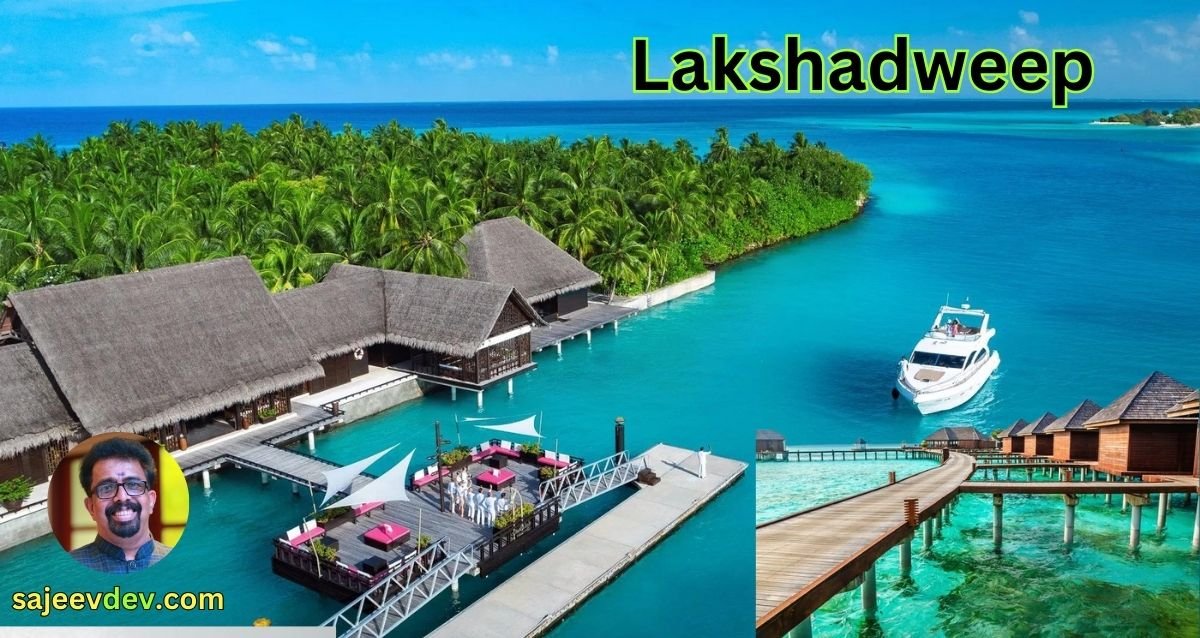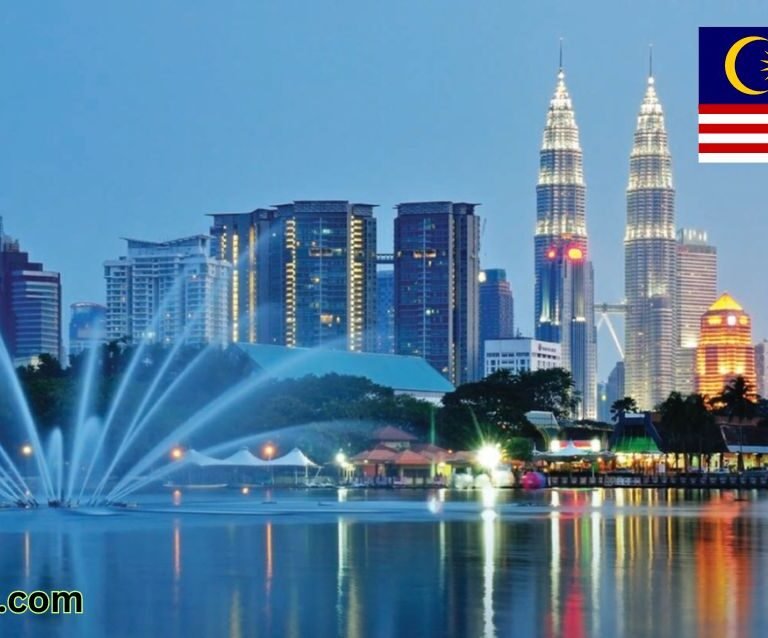Lakshadweep
Located off the southwestern coast of India, Lakshadweep is a breathtaking archipelago in the Laccadive Sea, comprised of 36 islands which include atolls and coral reefs. It stands out as one of India’s most stunning natural treasures. Spanning a total area of approximately 32 square kilometers, only 10 of these islands are inhabited, each offering unique ecosystems and rich maritime biodiversity. As a Union Territory, Lakshadweep is administered directly by the Central Government of India, with a distinct administrative structure designed to preserve its delicate environmental balance while promoting sustainable tourism.
Travelers intending to explore Lakshadweep must secure appropriate permits, given the region’s strict entry regulations aimed at conserving its pristine environment and ensuring the welfare of its residents. Permits are available from designated offices, and specific guidelines must be followed to gain entry. The islands are accessible mostly by sea routes and also by air through the Agatti Aerodrome, the only airport in Lakshadweep.
Geographically, Lakshadweep’s terrain is predominantly made up of coral atolls, which are rings of coral that form around lagoons. These unique formations are essential for marine life habitats, making the region a crucial spot for ecological studies and conservation efforts. The crystalline waters of the Laccadive Sea host a multitude of marine species and vibrant coral reefs, attracting researchers, divers, and nature enthusiasts from around the world.
Despite its remote location, Lakshadweep is progressing steadily in infrastructure development, ensuring basic amenities for its inhabitants while maintaining environmental integrity. By balancing development with nature conservation, Lakshadweep aspires to remain a beacon of natural beauty and biodiversity. As we delve deeper into this tropical paradise, we find layers of culture, history, and natural wonders that continue to enchant visitors.
Natural Beauty and Scenic Landscapes
Nestled amidst the vast expanses of the Arabian Sea, Lakshadweep stands as a testament to nature’s splendor, presenting an unparalleled blend of pristine white sandy beaches, turquoise blue waters, and lush green palm and coconut trees. This collection of islands epitomizes the tropical paradise, offering an oasis of tranquility and natural beauty that beckons visitors from far and wide.
The beaches of Lakshadweep are immaculate, their pure white sands providing a stark contrast to the vibrant hues of the surrounding waters. It is not uncommon to see visitors basking in the sun, enjoying the rhythmic sound of the waves crashing onto the shore while the gentle sea breeze sways the palm trees overhead. The island’s beaches are not just scenic; they evoke a sense of serenity and calm that is rare to find in today’s bustling world.
The turquoise blue waters of Lakshadweep are crystal clear, revealing a mesmerizing world beneath the surface. Snorkelers and divers are treated to spectacular views of the vibrant marine life, with coral reefs teeming with colorful fish and other sea creatures. The lagoons, with their calm and gentle waters, are ideal for a peaceful swim or a relaxing boat ride, further adding to the island’s allure.
As the day winds down, the breathtaking sunset views in Lakshadweep offer a picture-perfect end to a day in paradise. The sky transforms into a palette of warm oranges, pinks, and purples, reflecting off the waters and providing a stunning backdrop for reflection and contemplation. Whether viewed from the beach or a boat, the sunsets in Lakshadweep are an unforgettable experience.
Underwater Wonders: Marine Life and Coral Reefs
The Lakshadweep archipelago is a veritable underwater treasure trove, boasting an astonishingly vibrant marine ecosystem. Encompassing around 36 islands, this tropical paradise is encircled by turquoise waters teeming with an array of marine life that both fascinates and draws enthusiasts from around the globe. The surrounding waters are home to a spectacular variety of fish species, ranging from the tiny and colorful clownfish to the impressively large parrotfish, creating a dynamic underwater tableau.
The coral reefs of Lakshadweep are among the most pristine in the world, serving as a vital refuge for myriad marine species. These reefs are a kaleidoscope of colors, populated by staghorn corals, brain corals, and anemones, which collectively create an underwater spectacle that parallels the most exquisite terrestrial gardens. The coral formations provide shelter and sustenance to not only smaller fish but also larger, more majestic creatures such as sharks and rays. Sightings of these graceful beings are commonplace, contributing to the islands’ reputation as a premier diving destination.
Snorkeling and diving opportunities in Lakshadweep are second to none. These activities allow visitors to immerse themselves directly into the heart of this aquatic wonderland. The crystal-clear waters provide excellent visibility, enhancing the underwater experience and making it accessible to both novices and seasoned divers alike. Guided tours and dive instructions are readily available, ensuring that all adventurers can safely explore the dazzling underwater vistas.
Conservation efforts within Lakshadweep are critical to maintaining the health and vibrancy of its marine ecosystems. Local and international organizations collaborate on initiatives to protect the biodiversity here, tackling challenges such as coral bleaching and overfishing. Sustainable tourism practices are strongly encouraged, highlighting the importance of preserving this underwater haven for future generations. The balance between enjoying and protecting this natural wonder is a core ethos driving these conservation efforts, ensuring that the enchanting underwater life of Lakshadweep continues to flourish.
Cultural Heritage and Community Life
Lakshadweep, India’s tropical paradise, is not only known for its stunning natural beauty but also for its rich cultural heritage. The islands are home to a unique blend of traditions and customs that have been shaped by historical influences and the community’s adherence to Islam. This cultural tapestry is evident in the daily life, festive celebrations, and the hospitality of the islanders.
The predominant religion practiced in Lakshadweep is Islam, which greatly influences the islands’ culture and traditions. The local population, predominantly composed of the Sunni sect, follows Islamic teachings and values that shape their way of life. This is most evident during religious occasions such as Eid-ul-Fitr and Eid-ul-Adha, where the community comes together in celebration, prayer, and feasting.
Festivals in Lakshadweep are a vibrant display of the islands’ cultural richness. Besides the Islamic festivals, the islanders celebrate a number of local events that provide a glimpse into their unique traditions. One such event is the “Uroos,” which marks the commemoration of saints and involves grand processions, music, and dance. The festivities are not only a time for celebration but also for strengthening the communal bonds that are integral to the island’s social fabric.
Cuisine in Lakshadweep offers a flavorful journey into the local culture. The food is a delightful blend of traditional Kerala and Maldivian cuisines, with coconut, rice, and seafood as staples. Dishes such as “Tuna Curry,” “Octopus Fry,” and “Sweet Coconut Milk” are popular among locals and visitors alike. These culinary delights are often prepared with spices and ingredients that reflect the islands’ bountiful natural resources.
One of the most endearing aspects of Lakshadweep is the warm hospitality of its people. The islanders are known for their friendly and welcoming nature, making visitors feel at home. This spirit of hospitality is deeply rooted in their cultural values and is an integral part of the community life. Whether it’s offering a meal or engaging in friendly conversation, the islanders’ generous nature leaves a lasting impression on all who visit.
In essence, Lakshadweep’s cultural heritage and community life offer a rich and immersive experience. The harmonious existence of traditions, religious practices, and communal interactions create an enchanting atmosphere that enhances the charm of this tropical paradise.
Kavaratti: The Heart of Lakshadweep
Kavaratti Island stands as the pulsating heart of Lakshadweep, exuding both administrative importance and cultural charm. It is not merely the administrative capital but also a beacon of development and accessibility within the archipelago. The island’s strategic significance is underscored by its position as the seat of the local government, housing key administrative offices and facilities that ensure the smooth functioning of the Union Territory.
Among the island’s array of attractions, the Ujra Mosque holds a place of reverence and beauty. This ancient structure, renowned for its intricate wood carvings and peaceful ambiance, is an epitome of religious and historical significance, drawing both devout worshippers and curious tourists. The mosque is a testament to the thriving cultural fabric of Kavaratti, preserving traditions that date back centuries.
Equally captivating is the Kavaratti Aquarium, a marvel of marine biodiversity. This aquarium offers a window into the vibrant aquatic life of the region. Housing an extensive array of local fish species, coral formations, and other marine organisms, it provides an educational and engaging experience for visitors. The aquarium serves as a microcosm of the rich marine ecosystem that thrives around Lakshadweep, emphasizing the importance of conservation efforts.
Tourism in Kavaratti is well-developed, thanks to its picturesque landscapes and crystal-clear waters that appeal to a myriad of travelers. The island’s pristine beaches offer idyllic spots for relaxation, while water sports enthusiasts can indulge in thrilling activities such as snorkeling, scuba diving, and kayaking. These opportunities not only enhance the travel experience but also contribute substantially to the local economy, supporting businesses and creating employment for the island’s residents.
In essence, Kavaratti encapsulates the essence of Lakshadweep, balancing administrative duties with an enviable appeal to tourists. Its historical landmarks, natural attractions, and vibrant cultural scene make it a must-visit destination for anyone exploring India’s tropical paradise.
Adventure and Activities for Tourists
Lakshadweep, often regarded as India’s tropical paradise, offers an array of exhilarating activities that cater to every adventurer’s longing. The pristine waters encircling these islands present perfect opportunities for water sports enthusiasts. Kayaking and canoeing around the coral reefs offer unique ways to explore the vibrant marine ecosystem, giving a sense of tranquility and thrill simultaneously. For those looking for more wind-driven adventures, windsurfing is an activity that provides the adrenaline rush while navigating the azure waves of the Arabian Sea.
The adventure doesn’t end at water-based activities. Lakshadweep is equally appealing for those who cherish land-based explorations. Trekking through the lush landscapes of the islands offers a chance to witness the untouched beauty up close. Paved paths and guided trails lead to breathtaking vantage points, revealing panoramic views of the surrounding seascape. Bird watching enthusiasts will find delight in the island’s rich avian diversity, spotting exotic species that inhabit this tropical haven. The chirps and songs of native birds provide a melodious backdrop to the scenic beauty of Lakshadweep.
Tourists who prefer a more leisurely pace can indulge in cycling across the islands. The flat terrain and scenic routes make it an enjoyable way to explore local culture and landscapes. Bicycles are readily available for rent, and cycling tours often include stops at picturesque spots, giving riders ample opportunities to capture the natural beauty through their lenses.
Lakshadweep successfully merges the thrill of adventure with the serenity of nature, making it an ideal destination for explorers of all ages. Whether you dive into water sports or engage in trekking and bird watching, the islands promise a journey filled with excitement and wonder, leaving every visitor with unforgettable memories.
Environmental Importance and Conservation Efforts
Lakshadweep, a spectacular archipelago in the Arabian Sea, holds immense ecological value. The region’s unique marine and terrestrial ecosystems are vital not only for biodiversity but also for sustaining local livelihoods. The rich coral reefs, seagrass beds, and mangroves play a critical role in climate regulation, coastal protection, and supporting marine life.
The conservation of Lakshadweep’s natural resources is paramount. The Indian government, alongside local communities, has implemented various conservational strategies to maintain the ecological balance. One notable initiative is the designation of several marine protected areas (MPAs) that restrict activities harmful to the ecosystem. These MPAs are essential for protecting coral reefs, breeding grounds, and other critical habitats from overfishing and destructive practices.
Regulated tourism is another key element of conservation efforts in Lakshadweep. The Union Territory administration has imposed stringent guidelines to minimize human impact on the fragile environment. These regulations include controlled visitor numbers, eco-friendly accommodations, and waste management systems designed to reduce pollution. Eco-tourism initiatives are also promoted, focusing on sustainable practices that allow tourists to experience the natural beauty without compromising ecological integrity.
Additionally, several community-led programs focus on environmental education and awareness. These programs aim to involve local populations in conservation activities, ensuring that they understand the importance of preserving their natural heritage. The synergy between traditional knowledge and modern scientific approaches has fostered innovative conservation methods tailored to the region’s unique needs.
Through an amalgamation of governmental policies and community-driven efforts, Lakshadweep continues to serve as a model for sustainable ecological practices. Preserving this tropical paradise is paramount for future generations, ensuring that its pristine ecosystems remain a refuge for diverse marine life and a testament to nature’s splendor.
Navigating the logistics of a remote destination like Lakshadweep is essential for a hassle-free experience. One primary requirement for visiting this cluster of islands is obtaining a permit. Both Indian and international tourists must secure a permit, with the process varying slightly between the two. Indian citizens can usually acquire permits through online applications or the Lakshadweep administration offices, while international visitors should contact the Ministry of Home Affairs in Delhi to facilitate the process.
Timing your visit to Lakshadweep is crucial for an optimal experience. The islands are best visited between October and May when the weather is most conducive to exploring and engaging in water-based activities. Monsoon season from June to September brings heavy rainfall and rough seas, making it less ideal for travel and water sports.
Transportation to Lakshadweep primarily involves sea and air routes. Passenger ships operate from Kochi to various islands, providing an immersive sea voyage experience. Alternatively, flights to Agatti Island from Kochi offer a quicker mode of travel, albeit at a higher cost. From Agatti, inter-island ferries and helicopter transfers facilitate movement within the archipelago.
Lakshadweep’s accommodation ranges from government-run properties to private resorts, catering to varying budgets. Government guesthouses and tourist homes are available on several islands, offering essential amenities at reasonable rates. For those seeking luxurious stays, a handful of upscale resorts like the Bangaram Island Resort provide a more opulent beachfront experience.
Safety is of utmost importance for any traveler to Lakshadweep. The islands are generally safe, but observing standard precautions is wise. Swimming or diving should only be done in designated areas with appropriate gear. Given the tropical climate, staying hydrated, using sunscreen, and protecting against mosquitoes are necessary measures.
Armed with this practical information, you can confidently plan a memorable trip to Lakshadweep, ensuring both enjoyment and safety in the exotic Indian Ocean paradise.









